Samsung Galaxy S26 Plus vs Galaxy S23 Plus: Main differences to expect

In early 2026, we will witness the arrival of yet another crop of Samsung devices that will deliver as few upgrades as possible to justify the new model name.
The Galaxy S26 range will reportedly launch sometime in February and will be extremely similar to its predecessor and most previous Galaxy S Plus devices of the range.
One of the better previous Galaxy S Plus devices is undoubtedly the Galaxy S23 Plus. A phone that is still quite adequate and doesn't feel outdated at all, the Galaxy S23 Plus was notable for its use of that year's Snapdragon chip worldwide, regardless of the market.
Do Galaxy S23 Plus users have a reason to upgrade, or could they stretch out one extra year of usage on their devices?
Galaxy S26 Plus vs Galaxy S23 Plus expected differences:
| Galaxy S26 Plus | Galaxy S23 Plus |
|---|---|
| Design | Design |
| Flat aluminum design, slightly raised camera island | Same flat design language, with separate camera lenses |
| Taller but narrower and thinner (158.4 x 75.7 x 7.35 mm) | Shorter, wider, and thicker (157.8 x 76.2 x 7.6 mm) |
| Display | Display |
| 6.7-inch Dynamic AMOLED 2X screen | 6.6-inch Dynamic AMOLED display |
| Much higher peak brightness very likely | Hits 1,500 nits of brightness |
| Performance | Performance |
| Qualcomm 8 Elite Gen 5 for Galaxy 93nm)/Exynos 2600 (2nm) | Snapdragon 8 Gen 2, 4nm |
| 12GB RAM, 256GB/512GB UFS4.0 versions | 8GB RAM, 256GB/512GB UFS4.0 storage options |
| Camera | Camera |
| Same triple camera (50MP + 10MP 3X + 12MP ultra) | Triple camera setup (50MP + 10MP 3X + 10MP ultra) |
| Battery | Battery |
| ~4,900 mAh battery inside | 4,700 mAh battery |
| 45W wired charging, likely 25W wireless charging | 45W wired, 10W wireless charging |
| Qi2 support with magnets possible | No Qi2 support |
Table of Contents:
Design and Size
Brothers at best, first cousins at worst
No two ways around it: the Galaxy S26 Plus and the Galaxy S23 Plus are instantly recognizable as devices belonging to one and the same family, though neither really has anything going for it that sets it apart from the large trove of mid-range Samsung devices out there.
Both are simple aluminum slabs with flat aluminum frames and pretty much identical design language. The only major difference? The Galaxy S23 Plus has separate camera lenses, whereas the Galaxy S26 Plus will most certainly arrive with a very tiny camera island that will unify the camera lenses together.
Just like the Galaxy S23 Plus, the Galaxy S26 Plus will utilize an aluminum frame, as flat as it gets, with no-curve front and back plates. Samsung has been rocking that design language for the past few years, and we don't think it's going to change anytime soon. No need anyway––flat is cool.
In terms of size, the Galaxy S26 Plus be slightly taller but narrower and slightly thinner than the older Galaxy S23 Plus. There's a chance that the new phone would be lighter, too, but it would probably hardly breach 200 grams.
| Galaxy S26 Plus | Galaxy S23 Plus |
|---|---|
| Thickness 7.3 mm | Thickness 7.6 mm |
| Dimensions 158.4 x 75.8 mm | Dimensions 157.8 x 76.2 mm |
| Weight Around 190 grams | Weight 196 grams |
We don't know what colors the Galaxy S26 Plus will launch in, but we do know what colors the Galaxy S23 Plus launched in: Phantom Black, Green, Cream, and Lavender, plus a couple of extra ones that were available on Samsung.com.
Both the Galaxy S26 Plus and Galaxy S23 Plus will also share the same wired charging –– a zippy 45W wired one.
Display Differences
The Galaxy S26 Plus will boast the same-sized 6.7-inch Dynamic AMOLED 2X display as the Galaxy S25 Plus. The screen will have up to 120 Hz refresh rate functionality, HDR support, and peak brightness hopefully surpassing 2,600 nits. We are also hopeful that the anti-reflective coating of the latest Galaxy S Ultra devices will trickle down to the Plus and regular Galaxy flagships, as it will passively improve the legibility further.
The older Galaxy S23 Plus was slightly more humble in terms of display specs. It had a 6.6-inch screen (0.1-inch smaller than the Galaxy S26 Plus), as well as peak brightness that's around 1,500 nits at the maximum. That's way less than we expect the Galaxy S26 Plus to achieve, meaning outdoor legibility might suffer.
| Galaxy S26 Plus | Galaxy S23 Plus |
|---|---|
| Size 6.7" | Size 6.6" |
| Brightness 2600+ nits (peak) | Brightness 1,500 nits (peak) |
Both phones will feature under-display fingerprint scanners, faster and more accurate than optical fingerprint scanners.
Performance and Software
Welcome back, Snapdragon and Exynos combo
The Galaxy S26 Plus will arrive with two different chips depending on the market.
The high-end 3nm Snapdragon 8 Elite Gen 5 for Galaxy chip will be used in the US, Canada, and China, while the rest of the world will get the Exynos 2600 chipset. The intriguing thing about this Samsung-made silicon is that it's the first one built on a 2nm manufacturing node. Samsung says the Exynos 2600 is some 5% better-performing and 8% more efficient than the previous Exynos 2500 chipset, so a pretty conservative upgrade.
The Galaxy S23 Plus, on the other hand, used the Snapdragon 8 Gen 2 chip in all regions. Although it's definitely not the fastest chipset around, it's still more than decent for light to moderate usage and would do you very well in all but the most demanding recent games.
| Galaxy S26 Plus | Galaxy S23 Plus |
|---|---|
| Chip Qualcomm Snapdragon 8 Elite Gen 5 (US, Canada, China) Exynos 2600 (ROW) | Chip Qualcomm Snapdragon 8 Gen 2 |
| Process 3nm/2nm | Process 4nm |
| RAM, Storage 12/256GB 12/512GB LPDDR5X RAM UFS 4.0 storage | RAM, Storage 8/256GB 812/512GB LPDDR5X RAM UFS 4.0 storage |
The Galaxy S26 Plus will most certainly arrive with at least 12 GB of RAM. We could possibly get up to 16 GB of RAM in certain markets, but 12GB should be the global standard. As a comparison, the Galaxy S23 Plus arrived with 8 GB of memory.
Storage-wise, both devices arrive will share the same 256 GB and 512GB storage options.
Camera
Blink, and you will miss the changes
Inspect the spec sheet of the Galaxy S23 Plus, and you are pretty much looking at what the Galaxy S26 Plus will offer.
Sure, there will be a slightly larger 12MP ultrawide on the Galaxy S26 Plus versus the Galaxy S23 Plus' 10MP ultrawide. The other two cameras are a 50MP wide and a 10MP telephoto with 3X.
While the hardware is pretty much identical, there should be a few years' worth of image-processing improvements baked into the Galaxy S26 Plus, so it should technically be capable of squeezing much better-looking photos out of its cameras.
| Galaxy S26 Plus | Galaxy S23 Plus |
|---|---|
| Main 50 MP, f/1.8 24 mm | Main 50 MP, f/1.8 23 mm |
| Ultrawide 12 MP, f/2.2 | Ultrawide 10 MP, f/2.2 |
| Telephoto 10 MP, f/2.4 3X zoom (67mm) 1/2.55" | Telephoto 10 MP, f/2.4 3X zoom (67mm) 1/3.94" |
Battery Life and Charging
Lots of gains
The Galaxy S26 Plus will likely come with a battery in the ballpark of at least 4,900 mAh. A slight upgrade to 5,000 mAh is definitely in the cards and is logical to assume. Or so I hope.
Anyway, the battery will certainly be larger than the 4,700 mAh cell inside the Galaxy S23 Plus, which was pretty decent of its own. It delivered excellent battery life, especially in web browsing and gaming. The Galaxy S25 Plus also had decent battery life with its 4,900 mAh battery, so the hopes are absolutely high for the Galaxy S26 Plus.
| Galaxy S26 Plus | Galaxy S23 Plus |
|---|---|
| Battery size 4,900 mAh | Battery size 4,700 mAh |
Charging speeds 45W wired 25W wireless charging Full Qi2 support likely, magnetic attachments | Charging speeds 45W wired 15W wireless charging |
Both the Galaxy S26 Plus and Galaxy S23 Plus will also share the same wired charging –– a zippy 45W wired one.
There could be major differences in terms of wireless charging, though. The Galaxy S26 Plus might come with full Qi2 support, meaning that not only is the charging speed potentially going up to 25 W, but the new Samsung might also score full magnetic support for attachments at the rear. This would allow you to quickly snap Qi2, MagSafe, or Pixelsnap accessories at the back and will open up a whole new universe of possibilities.
Specs Comparison
|
|
|
| Samsung Galaxy S26+ | Samsung Galaxy S23+ |
Design
| Dimensions | |
|---|---|
| 158.4 x 75.8 x 7.3 mm | 157.8x76.2x7.6mm (~9.02 mm with camera bump) |
| Weight | |
| 196.0 g | |
Display
| Size | |
|---|---|
| 6.7-inch | 6.6-inch |
| Type | |
| Dynamic AMOLED, 120Hz | Dynamic AMOLED, 120Hz |
Hardware
| System chip | |
|---|---|
| Snapdragon 8 Elite Gen 5 SM8850-AC (3 nm) | Snapdragon 8 Gen 2 SM8550-AC (4 nm) |
| Memory | |
| 12GB (LPDDR5X)/256GB (UFS 4.0) 12GB/512GB |
8GB (LPDDR5X)/256GB (UFS 4.0) 8GB/512GB |
| OS | |
| Android (16), up to 7 OS updates | Android (14, 13) |
Battery
| Type | |
|---|---|
| 4900 mAh | 4700 mAh |
| Charge speed | |
| Wired: 45.0W Wireless: 15.0W |
Wired: 45.0W Wireless: 10.0W |
Camera
| Main camera | |
|---|---|
| 50 MP (OIS, PDAF) Sensor name: Samsung GN3 Aperture size: F1.8 Focal length: 24 mm Sensor size: 1/1.56" Pixel size: 1.0 μm | 50 MP (OIS, PDAF) Sensor name: Samsung ISOCELL Aperture size: F1.8 Focal length: 23 mm Sensor size: 1/1.56" Pixel size: 1.0 μm |
| Second camera | |
| 12 MP (Ultra-wide) Sensor name: Sony IMX564 Aperture size: F2.2 Focal Length: 13 mm Sensor size: 1/2.55" Pixel size: 1.4 μm | 10 MP (Ultra-wide) Sensor name: Sony IMX564 Aperture size: F2.2 Focal Length: 13 mm Sensor size: 1/2.55" Pixel size: 1.4 μm |
| Third camera | |
| 12 MP (Telephoto) Sensor name: Samsung S5K3K1 Optical zoom: 3.0x Sensor size: 1/2.55" |
10 MP (Telephoto) Sensor name: Samsung S5K3K1 Optical zoom: 3.0x Aperture size: F2.4 Focal Length: 69 mm Sensor size: 1/3.94" Pixel size: 1.0 μm |
| Front | |
| 12 MP | 12 MP (Autofocus) |
See the full
Samsung Galaxy S26+ vs Samsung Galaxy S23+ specs comparison
or compare them to other phones using our
Phone Comparison tool
Summary
So far, the Galaxy S26 Plus is shaping up as more than a decent upgrade over the Galaxy S23 Plus. More than enough time has passed to justify thinking about an upgrade if you've been using a Galaxy S23 Plus for all this time.
The upgrades in the display, performance, and battery areas could be massive quality-of-life improvements.
Sure, the Galaxy S23 Plus was an excellent phone in its heyday, but a lot of water has gone under the bridge since then, and you might be missing out on some genuinely cool improvements.
Still, none of this changes the fact that the Galaxy S Plus flagship has always been weirdly positioned. It's not the best Samsung phone (that honor usually goes to the Galaxy S Ultra) and it's not even the most compact flagship (which is the Galaxy S Plus), making it the odd one out. A good phone usually, but still one without a clear purpose.
Could all that change with the Galaxy S26 Plus? Unlikely, but we'll see.
Follow us on Google News

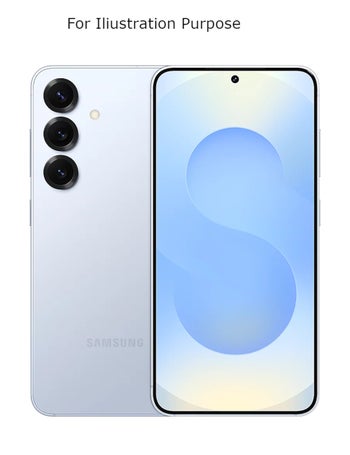



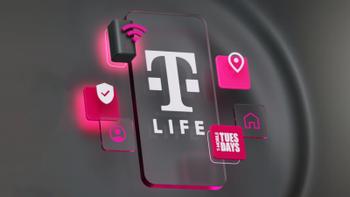


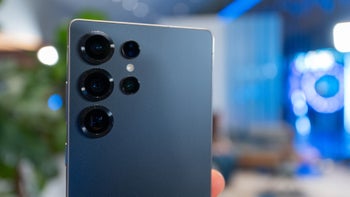


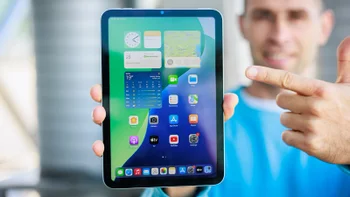
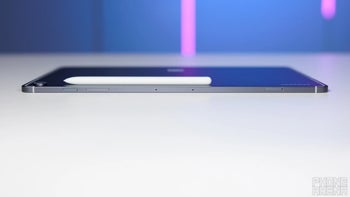
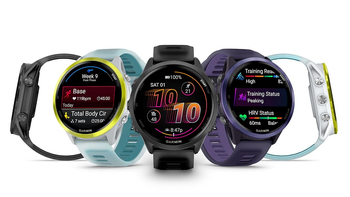
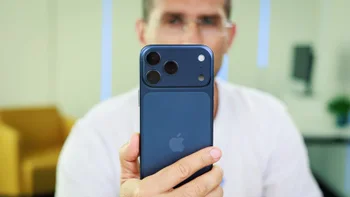
Things that are NOT allowed:
To help keep our community safe and free from spam, we apply temporary limits to newly created accounts: